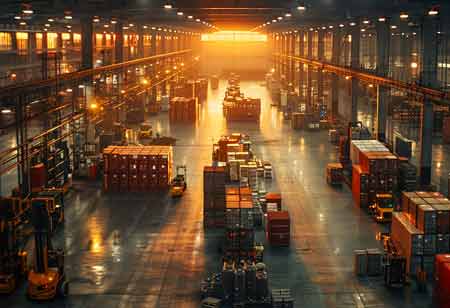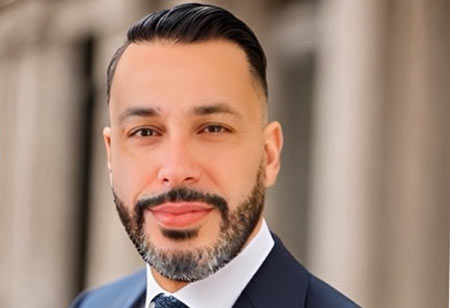THANK YOU FOR SUBSCRIBING

Sustainable Projects: Aligning Business and Purpose in Latin America
Jacquelina Dankfort, Director Operations & Business Generation Latam, Turner & Townsend

 Jacquelina Dankfort, Director Operations & Business Generation Latam, Turner & Townsend
Jacquelina Dankfort, Director Operations & Business Generation Latam, Turner & TownsendIn recent years, organizations across the built environment have undergone a significant shift in their perception of sustainability. What was once considered a peripheral concern for most has now become imperative for all. According to a recent SAP study, 69 percent of companies in Latin America have initiated or accelerated sustainability strategies, up from 46 percent in 2021.
It means the corporate landscape has fundamentally changed. Sustainability is no longer a business afterthought but an increasingly integral part of strategy across the world. Delving deeper, organizations in Latin America now recognize sustainability as a business priority, with 65 percent of Latin American organizations having set emissions reduction targets, according to the Honeywell Environmental Sustainability Index. When it comes to energy efficiency, 43 percent of companies in Latin America express optimism about achieving the United Nations’ 2030 Agenda for sustainable development, surpassing the numbers seen in other global regions.
What is clear is that companies that proactively embrace sustainability demonstrate commitment to protecting people and the planet while bolstering their values and purpose alongside those they work with across the supply chain.
There are other incentives, too. For instance, having sustainability at the core of corporate strategy in Latin America improves innovation at a time when regulatory landscapes and investor expectations are rapidly evolving, as is consumer demand. A good example is a Brazilian beauty products manufacturer that continues to lead the field by setting ambitious net positive goals while planning and implementing its long-term sustainability strategy with an action roadmap for 2050.
"When embracing sustainability, organizations contribute to a greener planet and also enhance their competitiveness."
Alongside creating a competitive advantage, demonstrating ‘green values’ in action also positively impacts market positioning, brand reputation, and talent attraction and retention strategies. The change in behavior of new generations highlights the increasing importance of sustainable practices, as exemplified by the Pew Research Center survey. When asked about engaging with climate change content online, those in Gen Z are particularly likely to express anxiety about the future. Nearly 69 percent of Gen Z reported feeling anxious the most recent time they saw content about addressing climate change, compared to a smaller majority (59 percent) of millennial social media users. Fewer than half of Gen X (46 percent) and baby boomers (41 percent) who use social media say the same.
As a global company specializing in a range of professional services from program, project, cost, and commercial management to project controls and advisory services, our business in Latin America has front-row seats to support clients in successfully developing and implementing their sustainability strategies and keeping pace with global trends.
One such example is the work carried out for a global advertising and marketing company, supporting a client from the project’s inception to the end delivery of a well-connected, efficient, sustainable campus. This resulted in the widespread use of recyclable materials, equipment, and new innovative sustainable technical solutions such as our Embodied Carbon Calculator, which was used to guide the client’s decision-making process and improve long-term environmental impacts of the construction.
Here, we designed a comprehensive energy transition strategy tailored to the country in Latin America, serving as an example of how the public and private sectors can engage in renewable energy initiatives and other renewable power solutions, fostering industrial efficiency and showing our commitment to achieving net-zero emissions by 2030.
In essence, this proprietary tool allows clients to assess the carbon footprint throughout the entire lifecycle by seamlessly integrating carbon management with financial planning, ensuring both aspects are handled efficiently and in parallel while reducing operational costs.
As new sustainable construction materials and technologies continue to gain prominence, the increased demand for sustainable buildings and growing regulatory requirements have contributed to economies of scale. This has resulted in significant monetary reductions, especially if initial costs are offset against the savings throughout the life cycle of the built asset.
As regulations change in central city areas, the volume of retrofitted buildings increases sharply, and supply chain considerations gain more prominence. Companies choosing locally sourced materials support regional economies while also reducing transportation expenses, and governments and organizations often evaluate suppliers based on environmental practices.
Decarbonizing value chains also involves short-term trade-offs for long-term gains and brings another set of requirements to construction projects. This presents an opportunity for organizations to educate stakeholders about the value of sustainability in the wake of continued technological advances that can help the continent achieve the energy transition.
When embracing sustainability, organizations contribute to a greener planet and also enhance their competitiveness. The rewards for those integrating sustainability into their core strategies and DNA, will see long-term gains realized if they act now. All these initiatives underscore the importance of collaboration and strategic planning to help transform performance on projects and programs for a greener, more inclusive, and more productive world
Let us build a future where sustainability is no longer an option, instead it’s simply the new normal.
Read Also
Development of the Logistics Warehousing Market in Brazil
Driving Innovation and Preserving Tradition
Operational Leadership VS Field Leadership in the Utility Construction Business
People-First Innovation: Developing Virtual Design and Construction (VDC) Training Programs to Empower Field Team Members
Engage Smarter: Why Constraints Matter More Than Hazards
Obligation or Option?

 Copyright © 2025 All Rights Reserved | by:
Copyright © 2025 All Rights Reserved | by: Construction Tech Review
| Subscribe | About us | Sitemap| Editorial Policy| Feedback Policy














